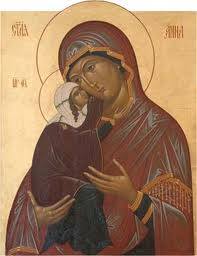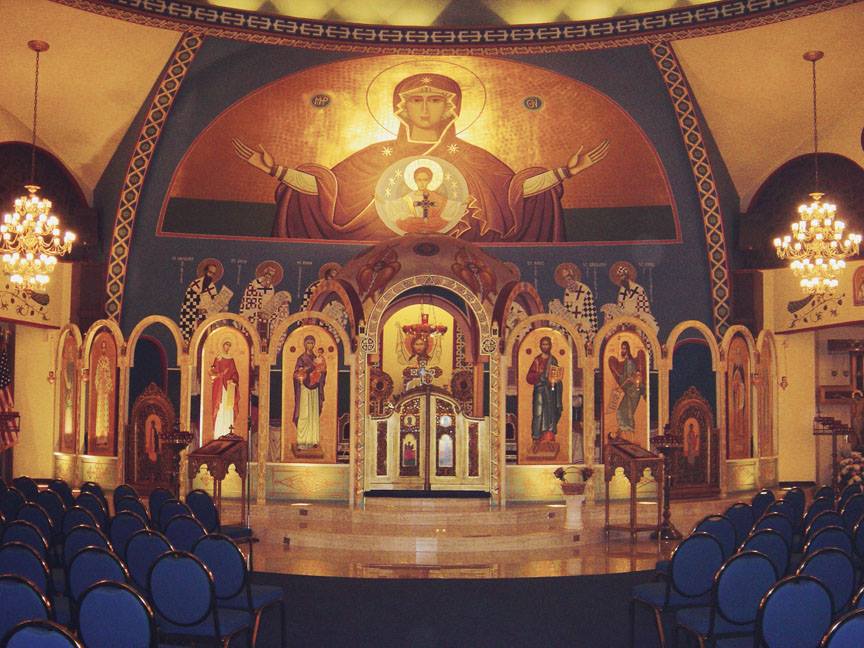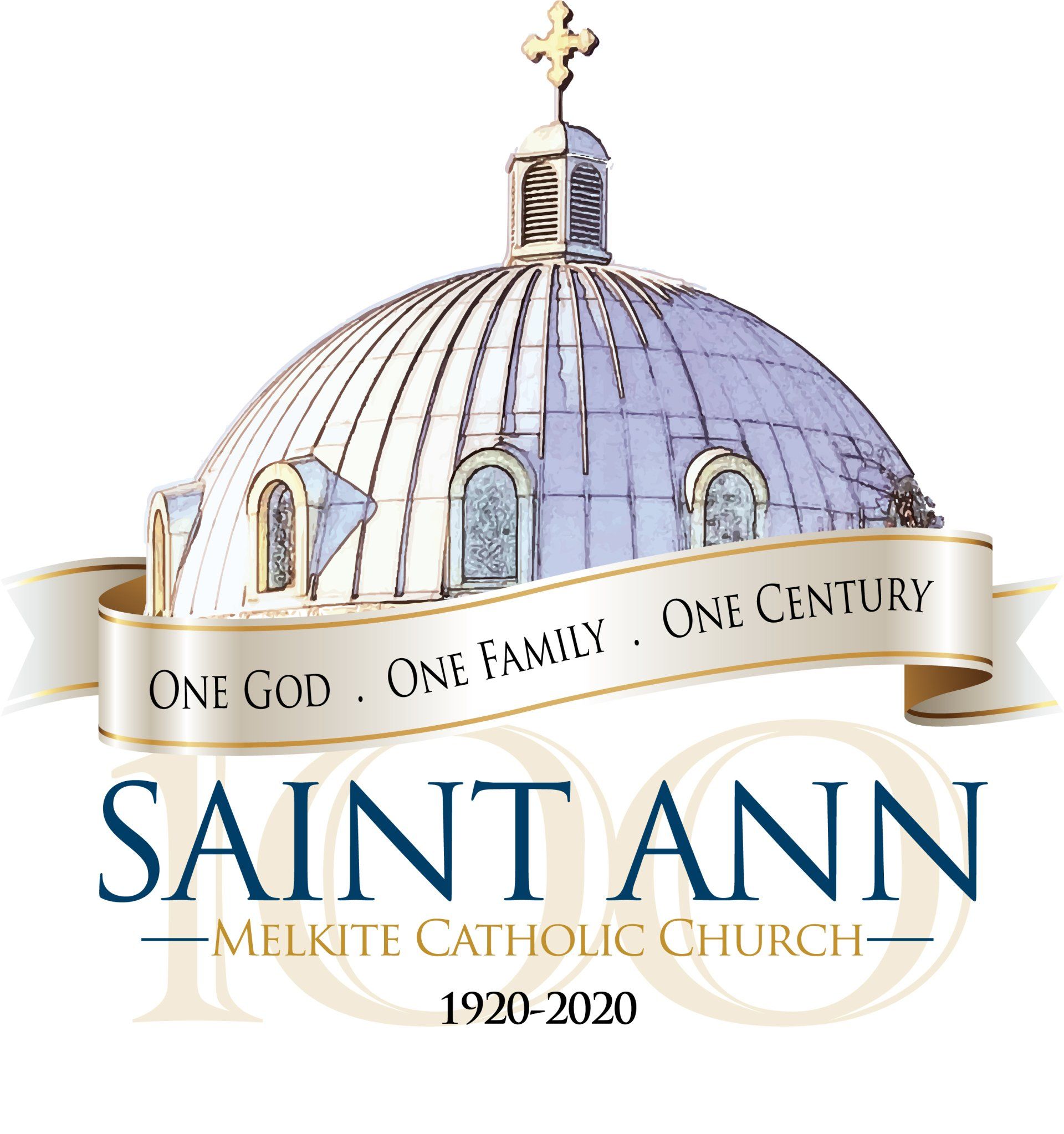About Us
Our Clergy
Rt. Rev Kenneth Sherman
Rev. Jean Ghaby
Archdeacon Edward Bsarany
Deacon Roland Basinski
Deacon Choukri Sabbagh
Deacon Robert Shalhoub
Church Distinctives

The Church is crowned with a huge dome symbolizing the Church as the Bride of Christ. The inside of the dome bears the great head of Christ the Pantocrator, “the Almighty One” carrying the word and blessing the world. Circling the dome on the tier below the Pantocrator (in relation of their closeness to Christ) are the angelic cherubim and seraphim including Michael, Gabriel, Raphael and Urico. On the next tier are the twelve major prophets of the Old Testament, including David, Solomon, and Moses, traditionally symbolic in that they prophesied the coming of Christ.

Saint Ann’s has the proud distinction of being the Shrine Church of the Holy Icon of Our Lady of America. Commissioned in 1972, by then Pastor Fr. Albert Gorayeb, the icon took 3 years to complete. Our Lady is adorned with 2,300 precious stones and silver gifted by various people. Fr. Al dedicated the Icon of Our Lady to bless the American people, hence the title Our Lady of America.
On June 27, 1976 Patriarch Maximos V Hakim and Archbishop Joseph Tawil solemnly blessed and consecrated the Icon, as a special blessing to America and to all those who pray before Her.
The icon is property of the Melkite Diocese of America, but will always be housed at St. Ann Melkite Catholic Church. The icon has gone on pilgrimage to parishes that request Her presence but She always returned home to St. Ann, as if Mary, the daughter was returning to Ann the Mother.

The most striking feature of the Melkite rite is its love of mystery. This is especially seen when celebrating the Divine Liturgy. The entire sanctuary is concealed by the Iconostasis, a lofty wooden screen interlaced with icons, separating the sanctuary from the rest of the church. It is the most prominent and distinguishing external characteristic in a church of the Eastern tradition.
This “sanctuary barrier” that cuts off the altar from our view does not hold back the participation in the mysteries of the liturgy, but is rather an aid to the Melkite spirit of worship. Melkite devotion is aroused by concealment as well as by exposition, and the doors of the iconostasis are not only to hide, but to reveal. The icon screen is a tangible witness to the mystery we live in the liturgy. It is not a barrier but a symbolic gateway into the Kingdom of Heaven.
- Click Here for Church History
In 1916, the great immigration of Syrians from Aleppo to Paterson took place.
Gradually acculturating to American life, these immigrants took care of their families’ basic needs without benefit of welfare. They learned the language, educated their children, experienced the highs and lows of world-wide economic and political conditions, and with great pride maintained their strong family ties and religious traditions.
An Armenian priest, Reverend Emmanuel Bazirganian, occasionally said liturgy in the chapel of Saint John’s Church for the new Catholics from Syria, but with his limited Arabic and ill health the need quickly arose for a more permanent solution.
On December 8, 1919, Father Cyril Anid, a priest from the Diocese of Beiruit, Lebanon, arrived in New York City for what was supposed to be a short visit. As Christmas approached, he was asked to come to Paterson to offer spiritual services for the holidays. He gladly accepted and celebrated the Divine Liturgy in the chapel of Saint John’s on Christmas Day. The people were so happy to worship in their own rite and hear the word of God in their own language, that with tears in their eyes, they urged Father Anid to stay with them.
A committee of lay people implored Bishop John O’Connor to appoint Father Anid as their pastor. In a few months, he was able to secure approval for the appointment from the Sacred Congregation for Eastern Churches in Rome. The Catholics from Syria in Paterson finally had their first permanent priest.
Within a very short time, the facilities at Saint John’s chapel were inadequate to accommodate the numbers of people attending liturgies. But people’s enthusiasm along with favorable economic conditions encouraged Father Anid to immediately begin a building fund campaign for a new church. However, because of a sudden business downturn and stock market decline in February, 1920 soon turned optimism into pessimism among the silk businesses of Paterson. Manufacturers were adversely affected and weavers went jobless. While waiting for the economy to recover, the church committee continued to look for a suitable building site. Among several properties, the Thomas E. O’Neill estate at 235 Mill Street met approvals.
Church funds were down to a few hundred dollars, significantly inadequate for even a down payment. But after an energizing and motivational visit from His Excellency Maximus Sayegh, then Archbishop of Tyre, Lebanon, and later the Patriarch of the Melkite Church, parishioners were able to successfully negotiate acquisition of the O’Neill property and raised $5000 in one week to be used as the first payment. (At that time a weaver’s weekly wage was $12.) The balance was completely paid off in less than a year and groundbreaking ceremonies took place in April 1922.
There was, however, one minor problem in this newly established Saint George Church, and that was the name. The community already had two Saint George Churches, one Roman Catholic and one Antiochian Orthodox; the name of the new Saint George Church only added to the confusion. As a result, the parish of Saint George was renamed by Father Anid, in honor of Saint Ann. As an alumnus of the famous Seminary of Saint Ann in Jerusalem, Father Anid chose this name in memory of his earlier student years.
In less than six years the parish started to prepare of the completion of the actual church, in a Byzantine style. However, in 1930, in the midst of the Great Depression, nearly all the parishioners were out of work. To attempt another building fund campaign would have been futile; so with the $8,000 already raised, the parishioners decided to do the work themselves. Father Anid acted as general contractor while others supervised the work. Unemployed men of the church were paid a nominal wage, thus helping them, while they helped their church.
On December 8, 1932, the new Saint Ann Church was solemnly blessed. That date was both the 10th Father Anid’s arrival in 1919.
Throughout the years that followed, Father Anid grew his parish, even throughout the Depression. He organized successful campaigns that raised funds for a new parish center. He led committees that purchased several homes adjacent to the church in order to provide places to house religious education classes, living quarters for priests, club meetings and parish social events. The people of the parish loved Father Anid as he loved them.
In May 1965, after 45 years of service, Archimandrite Anid stepped down as Pastor and Bishop James Navagh names Father Chalhoub as administrator of the parish, bestowing to Archimandrite Anid the honorary title of Pastor Emeritus. Father Anid, still active at age 80, continued to reside at the parish house. He devoted himself to two new projects: writing the history of his years at Saint Ann entitled I Grew With Them, published in 1967, and encouraging the Melkites of Miami, Florida to establish a Melkite parish in their city, a dream realized in December 1966. On November 4, 1968, at 83 years of age, Archimandrite Anid, our founding pastor, fell asleep in the Lord. anniversary of the dedication of the first church and the date of Father Anid’s arrival in 1919.
- Church History
In 1916, the great immigration of Syrians from Aleppo to Paterson took place.
Gradually acculturating to American life, these immigrants took care of their families’ basic needs without benefit of welfare. They learned the language, educated their children, experienced the highs and lows of world-wide economic and political conditions, and with great pride maintained their strong family ties and religious traditions.
An Armenian priest, Reverend Emmanuel Bazirganian, occasionally said liturgy in the chapel of Saint John’s Church for the new Catholics from Syria, but with his limited Arabic and ill health the need quickly arose for a more permanent solution.
On December 8, 1919, Father Cyril Anid, a priest from the Diocese of Beiruit, Lebanon, arrived in New York City for what was supposed to be a short visit. As Christmas approached, he was asked to come to Paterson to offer spiritual services for the holidays. He gladly accepted and celebrated the Divine Liturgy in the chapel of Saint John’s on Christmas Day. The people were so happy to worship in their own rite and hear the word of God in their own language, that with tears in their eyes, they urged Father Anid to stay with them.
A committee of lay people implored Bishop John O’Connor to appoint Father Anid as their pastor. In a few months, he was able to secure approval for the appointment from the Sacred Congregation for Eastern Churches in Rome. The Catholics from Syria in Paterson finally had their first permanent priest.
Within a very short time, the facilities at Saint John’s chapel were inadequate to accommodate the numbers of people attending liturgies. But people’s enthusiasm along with favorable economic conditions encouraged Father Anid to immediately begin a building fund campaign for a new church. However, because of a sudden business downturn and stock market decline in February, 1920 soon turned optimism into pessimism among the silk businesses of Paterson. Manufacturers were adversely affected and weavers went jobless. While waiting for the economy to recover, the church committee continued to look for a suitable building site. Among several properties, the Thomas E. O’Neill estate at 235 Mill Street met approvals.
Church funds were down to a few hundred dollars, significantly inadequate for even a down payment. But after an energizing and motivational visit from His Excellency Maximus Sayegh, then Archbishop of Tyre, Lebanon, and later the Patriarch of the Melkite Church, parishioners were able to successfully negotiate acquisition of the O’Neill property and raised $5000 in one week to be used as the first payment. (At that time a weaver’s weekly wage was $12.) The balance was completely paid off in less than a year and groundbreaking ceremonies took place in April 1922.
There was, however, one minor problem in this newly established Saint George Church, and that was the name. The community already had two Saint George Churches, one Roman Catholic and one Antiochian Orthodox; the name of the new Saint George Church only added to the confusion. As a result, the parish of Saint George was renamed by Father Anid, in honor of Saint Ann. As an alumnus of the famous Seminary of Saint Ann in Jerusalem, Father Anid chose this name in memory of his earlier student years.
In less than six years the parish started to prepare of the completion of the actual church, in a Byzantine style. However, in 1930, in the midst of the Great Depression, nearly all the parishioners were out of work. To attempt another building fund campaign would have been futile; so with the $8,000 already raised, the parishioners decided to do the work themselves. Father Anid acted as general contractor while others supervised the work. Unemployed men of the church were paid a nominal wage, thus helping them, while they helped their church.
On December 8, 1932, the new Saint Ann Church was solemnly blessed. That date was both the 10th Father Anid’s arrival in 1919.
Throughout the years that followed, Father Anid grew his parish, even throughout the Depression. He organized successful campaigns that raised funds for a new parish center. He led committees that purchased several homes adjacent to the church in order to provide places to house religious education classes, living quarters for priests, club meetings and parish social events. The people of the parish loved Father Anid as he loved them.
In May 1965, after 45 years of service, Archimandrite Anid stepped down as Pastor and Bishop James Navagh names Father Chalhoub as administrator of the parish, bestowing to Archimandrite Anid the honorary title of Pastor Emeritus. Father Anid, still active at age 80, continued to reside at the parish house. He devoted himself to two new projects: writing the history of his years at Saint Ann entitled I Grew With Them, published in 1967, and encouraging the Melkites of Miami, Florida to establish a Melkite parish in their city, a dream realized in December 1966. On November 4, 1968, at 83 years of age, Archimandrite Anid, our founding pastor, fell asleep in the Lord. anniversary of the dedication of the first church and the date of Father Anid’s arrival in 1919.
Contact
Location
802 Rifle Camp Rd
Woodland Park, NJ 07424
All Rights Reserved | Saint Ann Melkite Catholic Church

